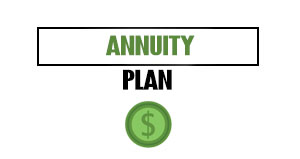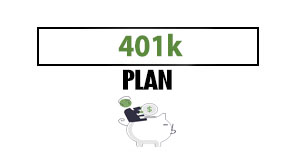Employees will have fewer decisions to make about their 401(k). However, they’ll still need to do a little thinking and ask questions before they choosing whether to opt for a Roth (401)k or a traditional 401(k). High salary earners, for example, will look more kindly on traditional 401(k) plans that let them defer their taxes than on Roth 401(k)s that levy taxes on the value of their contributions now.
Questions Employees Should Ask Before Choosing a 401(k)
At large companies, the HR department should be able to provide some guidance but you should go into the meeting armed with a number of questions.
-
How Much Will the Company Contribute?
Employees have very little control over the amount the company pays them. They might be able to boost their salaries by winning bonuses or by working extra hours but the usual way to increase a salary is to ask for a raise.
That’s never fun, and it doesn’t always yield results.
But once you know how much your employer will contribute to your 401(k) in matching contributions, you can control how much extra the company puts in your retirement fund.
If your company matches your contributions on a 50 percent basis, for example, and you plan to contribute $10,000 a year, you’ll add $5,000 to your overall income.
That gives you a big incentive to put as much into your 401(k) plan as possible. Contribute the maximum of $19,500 and you’ll have increased your salary by $9,750. It also means that whatever the level of matching contribution, failing to put the maximum into your 401(k) plan will be a way of cutting your own income.
In practice, companies rarely offer one-to-one contributions (or even one-to-two contributions) and they cap the amount they’ll pay. But when the company starts listing its pay and benefits, be sure to ask about the matching contributions. You’ll be able to see how much you’ll be leaving on the table if you don’t contribute everything you can to your 401(k) plan.
-
Where Are the Funds Invested?
One reason that you might want to contribute less than the maximum amount to your 401(k) plan is the performance of the retirement fund itself. Investing in a retirement fund means trusting institutional investors to put your money where it will do the best.
But the company’s fund might not be the best available. It’s results might be weaker than the market average. If the company has chosen a poor retirement fund then you might be better off keeping the money and investing it somewhere else.
In practice, though, that’s going to be difficult to justify. The loss of tax advantages and any matching contribution is likely to outweigh any advantage gained by putting your money in a higher-performing fund. But you should still know how well your fund is performing and track its performance if only to know how much you can expect to receive after you retire.
-
How Long is the Vesting?
The contributions that you make to your 401(k) will always be yours. But the matching contributions that the company makes to your 401(k) may never become yours. 401(k) plans allow companies to apply vesting conditions. In order to obtain the matching contributions, the employer will need to have remained with the company for a certain period of time. That vesting can come in two forms:
Cliff Vesting
Cliff Vesting is an all-or-nothing arrangement. Until you’ve met the threshold, you’ll receive none of the matching contributions. Beyond the threshold, you’ll receive all of the contributions. It’s a strategy that helps to ensure that the employee remains with the company for a minimum period of time on pain of a significant financial loss. It can be useful for companies that invest in employee training. If the firm is going to expend resources on an employee, then Cliff Vesting allows it to recoup some of its expenditure if the worker leaves before giving the company the value of that investment.
Graded Vesting
Graded Vesting matches the amount of matching contribution to the time spent at the company. An employee who leaves after completing just 10 percent of their vesting time, might receive 10 percent of the matching contribution, for example. At 50 percent, they receive half. Once they’ve met the vesting requirements, they can leave at any time and take all of their matching contributions with them.
This is a much more flexible form of vesting. While it still incentivizes employees to remain with the company, it does allow them to keep at least some of their matching contributions if they leave early. It’s a useful tool for a company to have when competition for employees is tight.
And it’s also useful for employees to know so that they can understand exactly how much they’ll lose if they leave the company.
Whether the firm uses Cliff Vesting or Graded Vesting, employees should ask about vesting times, and know how long they need to stay at the company to keep all of their matching contributions.
-
What are Distribution Conditions?
Usually 401(k) plans come with a penalty clause. Pull funds out before you reach the age of 59.5, and you’ll receive a 10 percent penalty on top of any income tax liabilities. But there are exceptions. You might be able to make withdrawals without incurring a penalty if you suffer a disability or need to avoid eviction, for example. Some 401(k) plans also allow their members to borrow against the contents of the plan. That can be a better idea than it sounds. It’s worth know if you can do it.
You can also expect to have to begin taking distributions from the age of 72.
The time when you begin taking money out of your retirement fund might seem distant. You might be a long way from retiring, and know that cracking open your pension early is a bad idea. But you should still know whether you’re able to take the funds, what sort of penalties you’ll have to pay, and whether you can use your 401(k) for a loan.
-
How Much Does it Cost?
Finally, retirement funds, including 401(k) plans, cost money. Fund managers charge an expense ratio which covers their administration and other expenses. That ratio will be a percentage of the amount held in the fund.
The ratio will vary from fund to fund. Some funds are much more expensive than others so even high-performing funds can be less profitable if fees take a large chunk out of the profits.
There’s little that employees can do about the cost of their 401(k) plans. It will be up to the company to find a fund that balances performance with expense. But knowing the cost can help to calculate whether it’s worth putting your money in the 401(k) fund or in a cheaper and higher-performing alternative saving fund.
- What Is a 401(k)?
- How a 401k Plan Works
- 401k Contribution Limits
- The Difference Between a 401(k) and a Pension
- The Benefits of a 401k
- Four Alternative 401(k) Plans
- How Employers Should Choose a 401(k)
- What Is an Indexed Annuity?
- 5 Questions Employees Should Ask Before Choosing a 401(k)
- Contributing to Your 401(k) Plan
- Contribution Limits
- Matching Contributions
- Your Age
- How to Set Your 401(k) Contribution Targets
- Calculating Your Social Security Benefits
- What’s In Your 401k Plan?
- Track Your 401(k)
- The Present and Future Value of Your 401(k) and Why You Need to Know Them
- Rolling Over Your 401(k)
- You Don’t Have to Rollover Today
- Moving Your 401(k) to Your New Employer With a Direct Rollover
- Moving Your 401(k) to Your New Employer With a 60-Day Rollover
- Borrowing Funds from Your 401(k)
- Lend Yourself Interest-Free 401(k) Funds
- Borrowing from Your 401(k) to Buy a Home
- Conclusion





